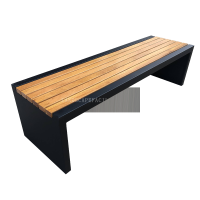Welcome to the website for landscape facilities products and knowledge.
What are the differences between smooth and ribbed interiors for cleaning efficiency?
When it comes to cleaning efficiency, the interior surface texture of pipes, containers, or industrial equipment plays a crucial role. Smooth interiors and ribbed interiors each have distinct advantages and drawbacks depending on the application.
Smooth Interiors:
Smooth surfaces are easier to clean due to their lack of crevices or ridges where debris can accumulate. They allow for faster fluid flow, reducing residue buildup. Common in food processing and pharmaceutical industries, smooth interiors minimize bacterial growth and simplify sanitization. However, they may require more frequent cleaning as contaminants spread evenly across the surface.
Ribbed Interiors:
Ribbed or textured surfaces provide better agitation during cleaning, helping dislodge stubborn deposits. They are often used in wastewater systems or heavy industrial settings where debris tends to cling. While ribs improve mechanical scrubbing action, they can trap particles in grooves, making thorough cleaning more challenging.
Key Considerations:
- Material Compatibility: Smooth surfaces suit high-purity applications, while ribbed designs excel in abrasive environments.
- Cleaning Methods: High-pressure jets work well on smooth surfaces, whereas ribbed interiors may need brushing or ultrasonic cleaning.
- Maintenance Costs: Smooth interiors often reduce long-term cleaning expenses despite higher initial costs.
Choosing between smooth and ribbed interiors depends on factors like contamination type, cleaning frequency, and operational demands. A hybrid design is sometimes used to balance efficiency and practicality.
Related search:

Recommendation
Modern Stainless Steel Begonia Wood Park Chair Outdoor Courtyard Leisure Sun Protection Bench Long Seat